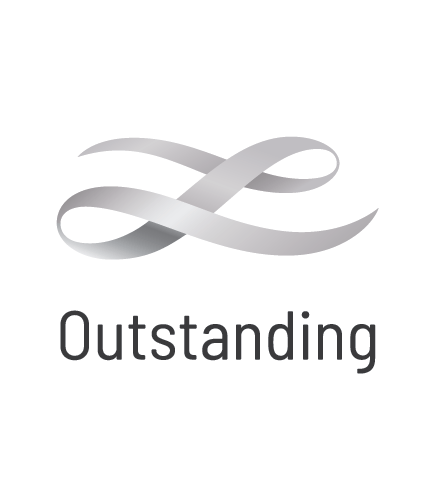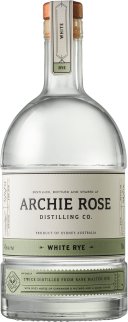Ten Minutes by Tractor Wallis Chardonnay
Ten Minutes by Tractor have access to some of the Mornington Peninsula's very best single vineyard sites. The Wallis Vineyard produces a Chardonnay of uptmost power and elegance here. Some delicious texture and weight are great features of this wine where fresh citrus provides contrast on the palate and some nice oak provides the structure.
Tyrrell's Vat 9 Shiraz
Joh jos prum Graacher Himmelreich Riesling-Spatlese
Graacher Himmelreich is a renowned vineyard that borders the southern edge of its more famous neighbour Wehlener Sonnenuhr. The Spatlese examples typically show lime and lemon sherbety aromas with savoury and honeyed overtones and pronounced slately minerality carried along by signature Mosel racy acidity.
Giant Steps Sexton Vineyard Chardonnay
Giant Steps plays it's part in the rapid accension of Australian Chardonnay back to the position it once held here. That being of the king of white varieties. This is a very stylish numbe from Phil Sexton and his team. Stonefruit, melon and butterscotch characters are supported by vanillin oak and the palate is long and textured with a clean crisp finish.
Joh jos prum Wehlener Sonnenuhr Riesling-Auslese
Named after the sundial erected in the vineyard in 1842, Wehlener Sonnenuhr is the most famous vineyard in the Mosel. J.J Prüm owns five hectares of this precious vineyard. Extremely steep with optimal south-south west exposure, it yields fragrantly floral wines with ripe stone fruit aromas, underlying slately minerality and wonderful depth of flavour and structure. The Auslese wines are typically more reticent when young showing vivid crystalline citrus fruit and a backbone of tingling minerally acidity that will carry it gracefully for decades.
Joh jos prum Graacher Himmelreich Riesling-Auslese
Graacher Himmelreich is a renowned vineyard that borders the southern edge of its more famous neighbour Wehlener Sonnenuhr. The Auslese examples typically show grapefruit citrus and green apple aromas, with honeyed overtones, wonderful density and pronounced minerality carried along by signature Mosel racy acidity.
Domaine du Pelican Arbois Savagnin Ouillé
This is the emblematic vine of Jura. In Jura, Savignin is mostly used to produce vin jaune, an oxydative wine which has made Jura famous. Domaine du Pélican produces a non-oxydative cuvée (topped up during elevage in the barrel to avoid oxydation, hence called "Savagnin Ouille"). The Savagnin vine belongs to the Traminer family. Since its birth in Montigny-lès-Arsures in 2012, Domaine du Pélican has rapidly established itself as one of Juras leading lights, producing exceptional biodynamic wines that mix finesse with thrilling Jurassien character. The project was born in Taillevent Paris where Guillaume dAngerville, proprietor of the great Volnay estate Marquis dAngerville, was served blind a bottle of Jura Chardonnay from the 2005 vintage. Struck by its quality, Guillaume was taken a back to discover the wine was not from Meursault, let alone anywhere in the Côte dOr. This moment proved the trigger for an exciting new project. Several Jura visits and tastings later and Guillaume was convinced to buy land there. He sought the help of respected Jura geologist Yves Hérody to find the best vineyard sites, a journey which took three years and culminated in a deal with the Château de Chavannes in Montigny-lès-Arsures in 2012 to purchase and lease five hectares. Jean-Marc Brignot sold him another five hectares shortly afterwards and finally in 2014 five hectares were leased from retiring Jura legend Jacques Puffeney. The estate is managed by Guillaumes Volnay Régisseur and partner in Domaine du Pélican, François Duvivier, who runs a team permanently based in the Jura. The vines are between Arbois and Montigny. Vitally all 15 hectares are within 2km of each other, the same as in Volnay, this allows the estate to grow the vineyards bio-dynamically for which some of the necessary treatments need to be made within two hours of preparation. The plots are among Juras finest, the very best being En Barbi and Grand Curoulet. The terroirs here, a mix of marly clay and gravels with varying exposures from north to south, are even more complex than in Burgundy. Whilst a broadly Burgundian approach is employed to wine-making, there is no doubting the individuality and Jurassien personality of the wines. The dAngerville approach in the cellar has always been light-touch, one which is toned down even more for Domaine du Pélican, little new oak is used and élévage is shorter, lasting twelve months as opposed to eighteen in Volnay. Tanks and foudres are employed for ageing the reds, 500 litre casks for the Savagnin and traditional Burgundian barriques for the Chardonnay. The whites are both topped up as opposed to the more common oxidative Jura method. The rigour and investment of the Marquis dAngerville, local know-how and great terroir is proving a potent combination, for these are some of the most Juras most exciting and complex wines.
Tyrrell's Vat 1 Semillon
Tyrrell's Vat 1 Semillon is one of Australia's great white wines and has the capacity to age superbly in the bottle. This release continues the recent immaculate line up of Vat 1s that show classic citrus floral and honey aromas. The palate is dry, yet full-flavoured with lovely crisp acidity. Still only a relative baby in terms of Vat 1s longevity, this bottle will reward you for decades to come.
Joh jos prum Wehlener Sonnenuhr Riesling-Spatlese
Named of the sundial erected in the vineyard in 1842, Wehlener Sonnenuhr is the most famous vineyard in the Mosel. Extremely steep with optimal south-south west exposure, it yields fragrantly floral wines with ripe stone fruit aromas, underlying slately minerality and wonderful depth of flavour and structure. The Spatlese wines are very reticent in youth, blossoming between two and four years of age to display vibrant green apple, and white stone-fruit notes supported by a backbone of racy acidity.
Archie Rose Distilling Co White Rye
Our White Rye is uniquely distilled from rare malted rye and barley sourced from the finest producers, and greets you with cinnamon, nutmeg and spicy notes that envelope the palate. Twice distilled, it features a lingering, buttery finish with a subtle smokiness, and can be savoured straight or in your cocktail of choice.































